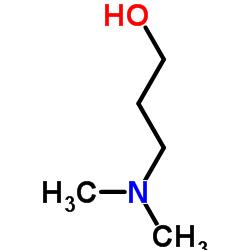Grafting of poly(ethylene glycol) onto poly(acrylic acid)-coated glass for a protein-resistant surface.
Tetsuichi Wazawa, Yoshiko Ishizuka-Katsura, So Nishikawa, Atsuko Hikikoshi Iwane, Shigeru Aoyama
文献索引:Anal. Chem. 78(8) , 2549-56, (2006)
全文:HTML全文
摘要
The surface of solid glass supports for samples in optical microscopy and for biosensors needs to be protein-resistant. A coating of a poly(ethylene glycol) monomethyl ether (mPEG) on the surface of the glass is one promising method for preventing the nonspecific adsorption of proteins. In this study, we have developed a novel technique for achieving an optimal coverage of a glass surface with mPEG to prevent protein adhesion. A clean glass substrate previously treated with (3-aminopropyl)dimethylethoxysilane (APDMES) was treated sequentially with poly(acrylic acid) and subsequently a primary amine derivative of mPEG in the presence of 1-ethyl-3-(3-dimethylaminopropyl)carbodiimide. The resultant glass surface was demonstrated to be highly protein-resistant, and the adsorption of bovine serum albumin decreased to only a few percentage points of that on a glass surface treated with APDMES alone. Furthermore, to extend the present method, we also prepared a glass substrate on which biotinylated poly(ethylene glycol) was cografted with mPEG, and biotinylated myosin subfragment-1 (biotin-S1) was subsequently immobilized on this substrate by biotin/avidin chemistry. Actin filaments were observed to glide on the biotin-S1-coated glass surface in the presence of ATP, and thus, the method is capable of immobilizing the protein specifically without any loss in its biological function.
相关化合物
| 结构式 | 名称/CAS号 | 分子式 | 全部文献 |
|---|---|---|---|
 |
3-二甲氨基-1-丙醇
CAS:3179-63-3 |
C5H13NO |
|
Enzymatic properties and substrate specificity of a bacteria...
2014-08-01 [FEBS J. 281(15) , 3523-41, (2014)] |
|
3-D-QSAR and docking studies on the neuronal choline transpo...
2010-08-15 [Bioorg. Med. Chem. Lett. 20 , 4870-7, (2010)] |
|
In Situ Synthesis of Antimicrobial Silver Nanoparticles with...
2016-03-14 [Biomacromolecules 17 , 1213-23, (2016)] |
|
Dimethylamine formation in the rat from various related amin...
1998-11-01 [Food Chem. Toxicol. 36(11) , 923-7, (1998)] |